Has the Ark of the Covenant Really Been Found?
“On January 6, 1982, at two o’clock in the afternoon, I found the ark of the covenant.”
So asserted the famous—or, perhaps more appropriately, infamous—amateur archaeologist, the late Ronald Wyatt (1933–1999).
It’s a statement that will naturally be met with scorn from many. But there also remains a large body of proponents who believe that Ron Wyatt really did find the ark of the covenant, along with his manifold other touted biblical discoveries made over a two-decade-long period. If this ark of the covenant “discovery” is news to you, you might be thinking, Why haven’t I heard this before? After all, such a jaw-dropping discovery should have received wall-to-wall coverage worldwide.
The answer to this and many of Wyatt’s other discoveries, put simply, is that there’s one key thing unfortunately missing: evidence. And none more lacking in evidence than what would surely be the greatest discovery of them all: the ark of the covenant.
Yet the argument from the Wyatt camp is that the lack of evidence is actually the result of a massive Israeli government cover-up.
What to make Wyatt’s purported discovery?
The Claim
In briefest summary: While digging in an area of the Garden Tomb (one of the theorized locations of Jesus’s crucifixion, just outside Jerusalem’s northern Old City wall), Wyatt stumbled across several apparent post-holes cut in the bedrock. One had a crack in the base that, according to Wyatt, continued on down underground through the bedrock to the ceiling of a chamber beneath, a chamber which Wyatt had stumbled upon by cutting into a separate tunnel system that led to it. This chamber was filled with large rocks nearly to the ceiling, obscuring temple treasures underneath, parts of which could be seen glinting through the rocks and animal hides that had been used to cover them.
In the back of this chamber was a large rectangular stone box whose lid was cracked in half. Within this stone chest was the ark of the covenant. A black substance coated the bedrock crack in the chamber ceiling above it, also coating the cracked stone lid directly below, and the mercy seat of the ark within. Wyatt surmised that this substance had flowed into the crucifixion post-hole on the Roman street level above and down through the cracked bedrock, dripping down into the chamber and onto the mercy seat of the ark below.
Wyatt scraped off some of the black substance, which he identified as blood, and sent it to a Jerusalem lab. They allegedly found that not only was the blood still “living,” it had only 24 chromosomes—23 chromosomes from the mother, and one Y chromosome from another, non-human source. As related in the Sabbath House Newsletter (Oct. 1998): “The Israelis cried out, ‘Where did you get this? What is it?’ Ron, with deep emotion, told them, ‘This is the Blood of your Messiah!’”
Gray’s Account
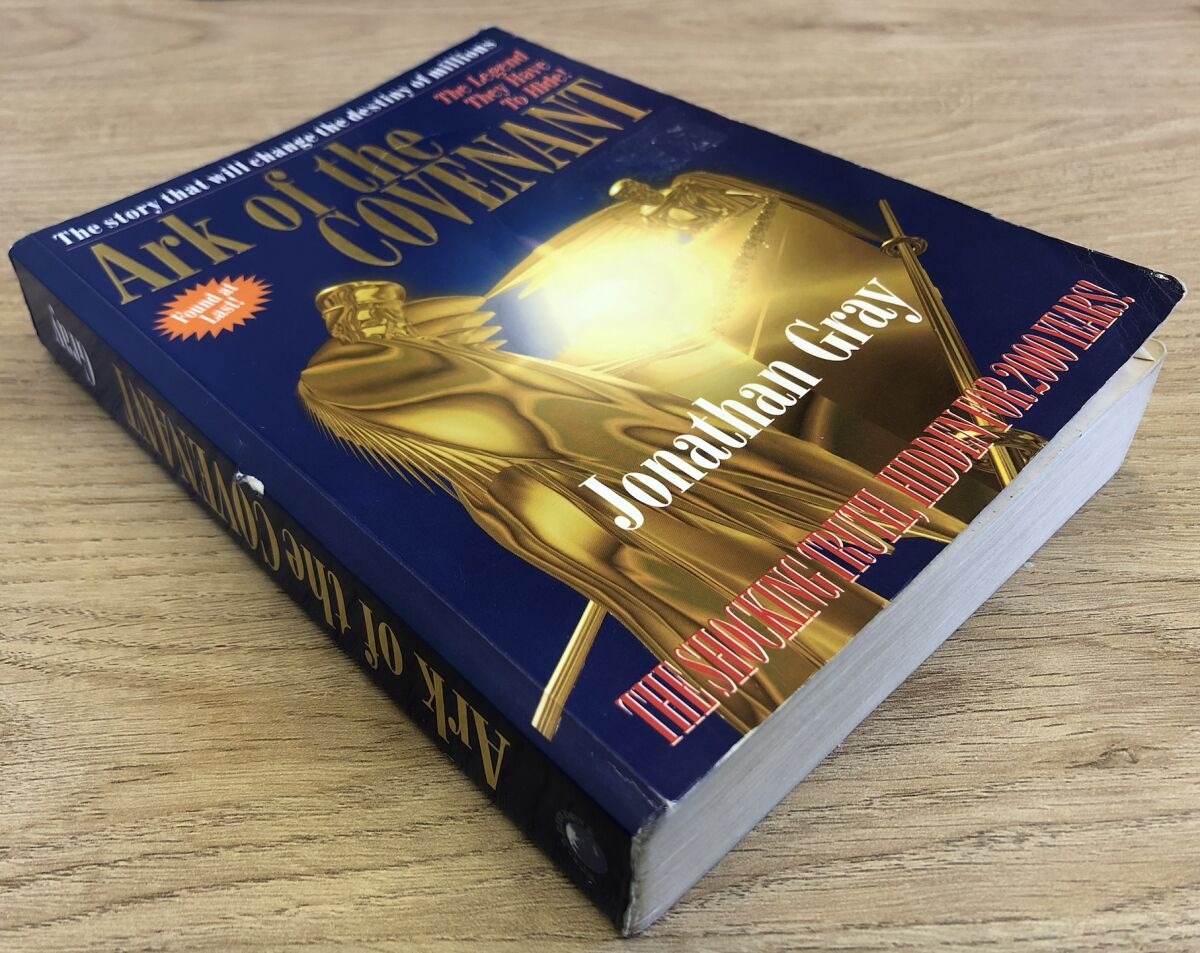
Perhaps all this may come as rather jarring to the uninitiated. And again, such a “discovery” has been suspiciously absent from journalism and archaeological publications.
Instead, one of the biggest driving forces in the dissemination of this “discovery” has been a 1997 book by Jonathan Gray (who became one of Wyatt’s close associates), titled Ark of the Covenant. The summary on the rear of the book provides a tantalizing hook:
THEY CALLED IT A HOAX,
TILL ONE MAN WENT TO PROVE IT SO…
THE UNEXPECTED TRUTH SHOCKED GRAY…
IT WILL SHOCK YOU TOO…
The cover of the book is splashed with attention-grabbing phrases around a central image of a (rather unusual looking) ark of the covenant: “Found at last!” “The shocking truth, hidden for 2,000 years!” “The legend they have to hide!” “The story that will change the destiny of millions.”
The book is a hefty one, at nearly 600 pages. Somewhat surprisingly, the introduction page is plastered with a series of capitalized warnings:
IMPORTANT
It is ABSOLUTELY VITAL that the chapters be read IN SEQUENCE or the significance of some events will not be understood.
DUE TO RESTRICTIONS BY THE HOST GOVERNMENT, WE ARE UNABLE TO PRESENT ALL COLLECTED DATA ON THIS SUBJECT. FOR MOST PEOPLE, THAT WHICH CAN BE SAID IN THIS BOOK WILL BE MORE THAN ENOUGH. OTHERS WILL HAVE TO WATCH AND WAIT, UNTIL THAT TIME WHEN IT WILL BE MADE PUBLIC
Still, at a length of roughly 600 pages, one can look forward to at least a significant amount of detailed data.
But somewhat surprisingly again, it is not until over 200 pages in that the book begins to address Wyatt’s discovery. Following a general discourse on the ark’s history, Phoenicians in the Americas and the Pacific, Gray’s expeditions into the Amazon, human sacrifices in Fiji, the holocausts of 70 c.e. and World War ii, conspiracies surrounding the assassination of Israeli Prime Minister Yitzhak Rabin, and several other angles besides, Chapter 21—“The Search”—begins with the following peculiarly worded introductory sentence:
She lost her false teeth. And the United Nations was needed to get them back for her.
Barely a page into this chapter, just preceding the description of Wyatt’s first trip to Jerusalem in 1978, there is another warning:
Go Back!
If you started reading this book only five minutes ago and you are already here, I want you to go straight back to Chapter 1. If you do not first read carefully the preceding chapters, you may neither understand nor accept the truth of what follows. And in that case you will not be qualified to make a rational judgment concerning this discovery.
(I have to admit, this was me. And so resignedly, I did.) This isn’t normally how lengthy archaeological treatises go, though. Typically, you’ll thumb through to the respective section of a lengthy volume and pick out the desired material specific to what you are studying.
But there’s a reason for this very carefully guided tour.
The Paranormal
Ron Wyatt’s “discoveries” have long been looked at with suspicion as being at the very fringes of the archaeological (or pseudoarchaeological) world. Wyatt was not an archaeologist. Instead, he was a nurse anaesthetist who claimed to find multiple dozens of biblically significant discoveries on a series of tours through the Middle East, including Noah’s Ark, the “real” Mount Sinai, the “real” Red Sea crossing site (at the Gulf of Aqaba, rather than the Gulf of Suez), sunken Egyptian chariot wheels, the sword of Goliath, and, most jaw-droppingly of all, the ark of the covenant and the very blood of Jesus.
Debate about Wyatt’s other discoveries aside (and there is a LOT of it), what makes this ark of the covenant “discovery” so difficult to swallow—thus necessitating a careful guidance through certain trains of thought—is not Wyatt’s “lack of scholarship” and an “anti-Bible bias” in academia (as is sometimes cited by his proponents), but rather the complete lack of evidence. Any pictures Wyatt took of the ark, for example, reportedly came out blurry (the below is the only photographic “evidence” provided). Video footage of the ark was allegedly similarly corrupted (though any video footage has been kept carefully hidden—more on this further down).
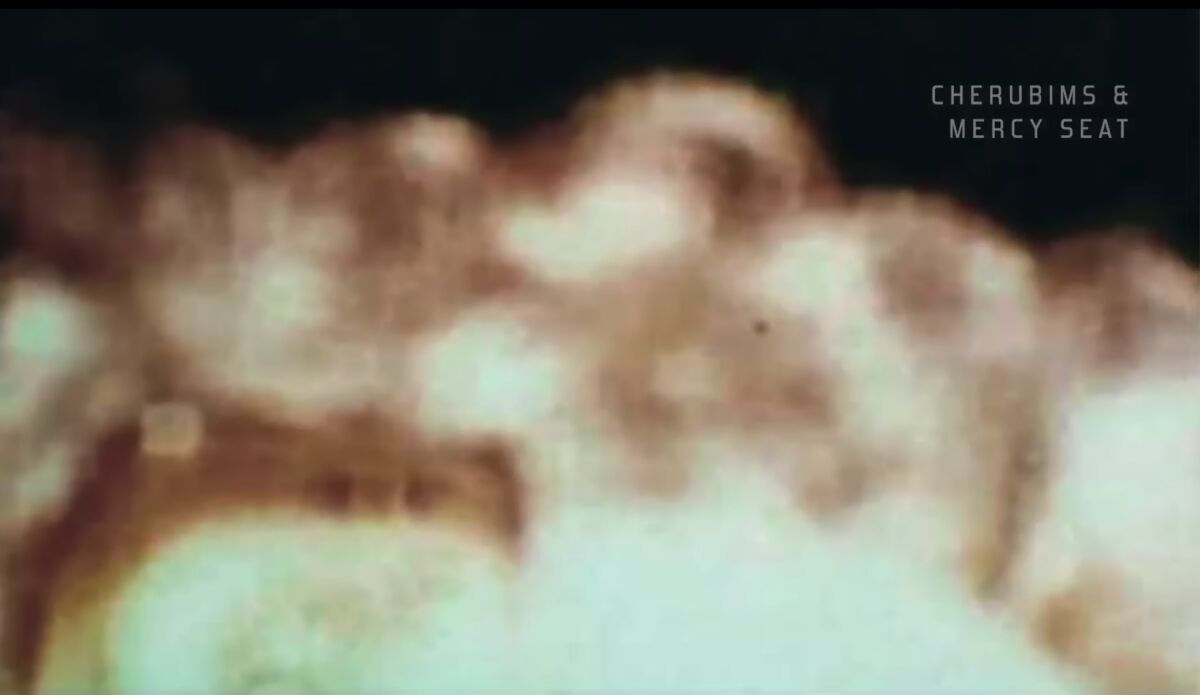
But this is only the very fringes of a journey into the paranormal.
Indeed, the very reason Wyatt began digging in this area within the Garden Tomb was allegedly due to an out-of-body experience: While touring through the area with an Israel Antiquities Authority official, his arm automatically raised up and pointed, and he heard himself say: “That’s Jeremiah’s grotto, and the ark of the covenant is in there.” Equally miraculously, the official who was with him at the time reportedly stated (according to Gray, page 229):
That’s wonderful! I want you to excavate. We’ll furnish you with a permit, fix you up with a place to stay, do your laundry. Yes, we’ll even supply your meals. And we’ll furnish you with all the diggers you need.
From here, the “spiritual” experiences compound. During his time on location, Wyatt reportedly met Jesus himself. He was allegedly wearing a handwoven garment and stated that he was “on his way from South Africa to the New Jerusalem” (see pages 361-363, as well as Wyatt’s own video testimony here). Added to this are accounts of numerous individuals who allegedly “got in the way of progress” with excavations, or tried to enter the site for malicious purposes, and who subsequently dropped dead.
But things only get even more peculiar from here.
Wyatt stated that he entered the aforementioned ark chamber four times. It is worth noting that in none of the initial visits did he actually see the ark with the naked eye. (During the first visit, Wyatt—who was struggling with “double pneumonia” with a “temperature of 102 degrees” at the time—merely deduced that the ark must be contained within the stone box, before losing consciousness; on a following visit, he entered the chamber with a medical colonoscope and used it to peer through the cracked lid of the stone box he believed the ark to be in, through which he saw a glimpse of gold.) The fourth visit, however, was something else entirely.
Wyatt reportedly clambered into the chamber to find it entirely empty of the tons of rocks that had filled it nearly to the ceiling. The ark and temple furnishings were all out on display and arranged. Four angels were in the room—“guardians” of the ark from the time that it was secreted some 2,600 years ago—and they instructed Wyatt to begin filming. Wyatt, as commanded by the angels, took out the two tablets of stone with the Ten Commandments inscribed. An angel also instructed Wyatt to lab-test the blood on the wall that had dripped down onto the ark.
Religion, Primarily—Archaeology, Less So
Such extreme claims naturally explain Gray’s manifold warnings in his book about following the narrative a certain way. But these claims do not stand on their own, nor do they come out of thin air. Such claims rest against Wyatt’s particular religious background (and Gray’s as well).
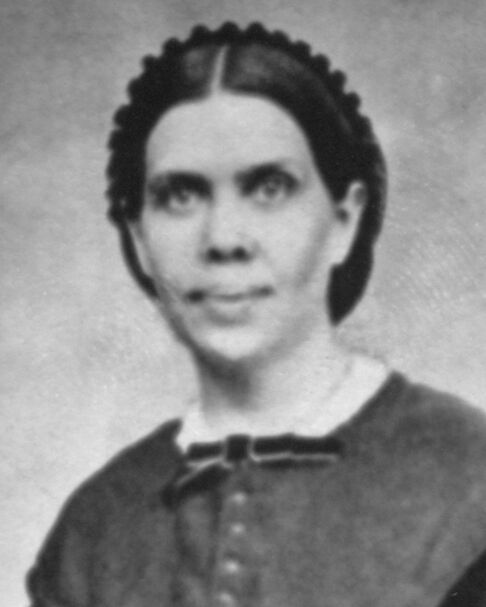
That background was Seventh-Day Adventism.
Wyatt’s “discovery” of the ark is wrapped up in several layers of Seventh-Day Adventist theology. His “discovery” was seen as the fulfillment of a prophecy made by Ellen G. White (as described here by Religious Tourism; still, a “prophecy” that is at best vague in reference). White (1827–1915) was co-founder of the Seventh-Day Adventist (sda) Church. She is particularly well known for her roughly 200 claimed “visions” (“unconscious,” “swooning,” “enrapturing” episodes during which she was reportedly observed to neither breathe nor blink for several hours).
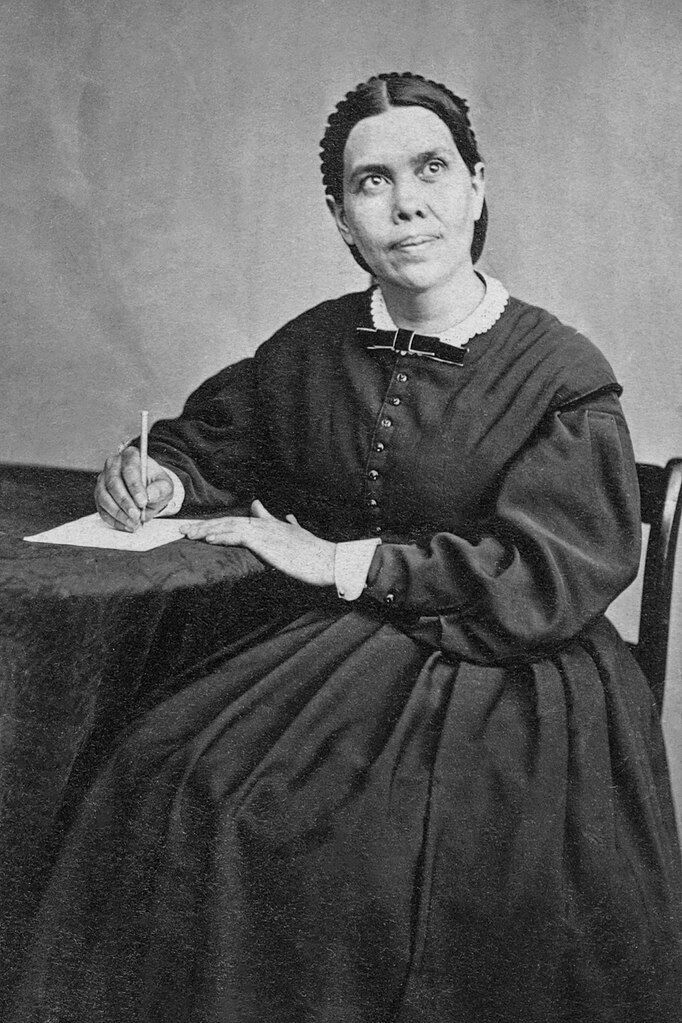
Wyatt’s identification of Jesus, for example, was based on the visions of White: “[H]e was dressed exactly as Ellen White saw Him in vision, with the blue border at the hem of His garment” (Sabbath House Newsletter, Oct. 11, 1998).
Yet Wyatt’s discoveries were not met entirely with enthusiasm among Seventh-Day Adventists. In fact, from among their ranks come some of Wyatt’s staunchest detractors.
Enter the Standish Brothers
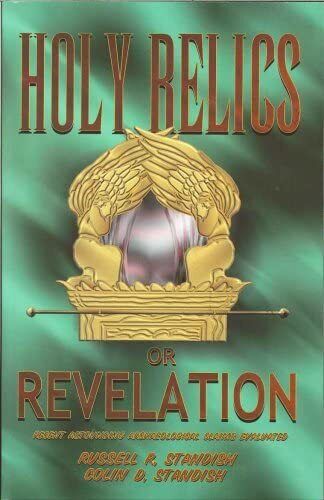
Two leading sda ministers—the identical twin brothers Colin and Russell Standish (the last of whom died in 2018)—penned a 300-page book, Holy Relics or Revelation (1999), clinically addressing Wyatt’s claims about finding the ark of the covenant, as well as addressing in detail Wyatt’s other claimed discoveries. (For all interested in this “Did Ron Wyatt find …” debate, this book is highly recommended.) The book addresses at length theological issues with the discoveries that are particular to Seventh-Day Adventism, but also the general conflict of such discoveries with the Bible itself, as well as highlighting gaps in logic, conflicting accounts, and outright impossibilities.
“In writing this book we have considered and rejected the desires of some of the Wyatt-Gray supporters who have asked that no such book be written,” they wrote in their introduction. “Such requests may register the insecurity of some who must possess lurking doubts concerning the veracity of the material they have embraced in the absence of solid evidence. Others fear lest some will lose their faith if deficiencies in Ron Wyatt’s widely-accepted claims are demonstrated. But error is dangerous. It destroys faith. It is truth which confirms and consolidates faith” (page 12).
“[T]he careful student of Biblical archaeology will certainly be alarmed if any archaeologist claims to have come face to face with Christ,” they write. “Certainly there will be no rushed acceptance of this or other claims, unless fully documented and thoroughly established by a cloud of witnesses. Yet … this archaeologist has claimed to have met and spoken to Christ” (page 21). They point out scriptural warnings about such encounters with “false Christs.” (It seems that Gray foresaw this, and thus tempered Wyatt’s identification by positing that it could alternatively have been an angel that he met with—Ark of the Covenant, page 363.)
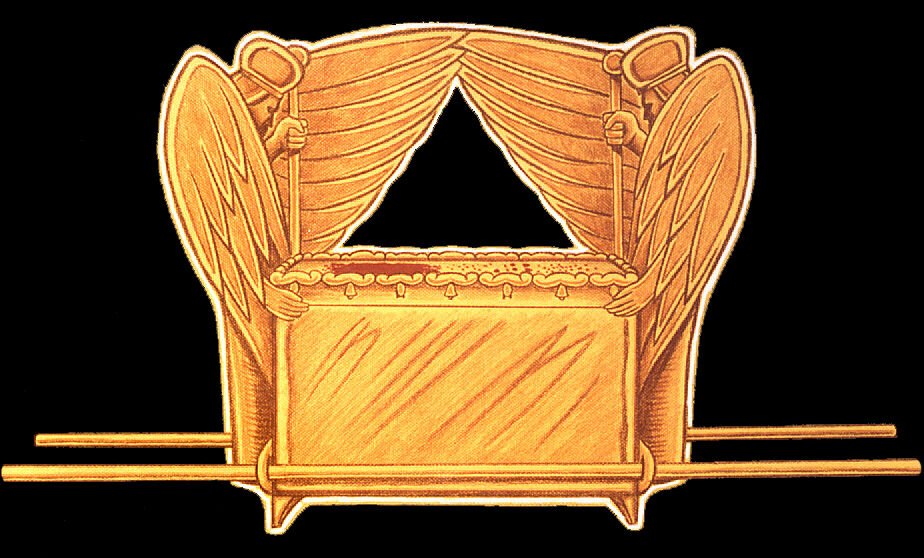
The Standish brothers also addressed the writing of Jonathan Gray. They noted the highly embellished style in which the book is written (much of it in a creative dialogue style, reading much like an action novel), including the notable lack of evidence and facts it provides (surprising, given Gray presented himself as such an initial sceptic). Further, regarding Gray’s repeated claims of high initial “skepticism” (“a skeptic by nature,” “ever skeptical,” “my personal quest … I would disprove the claims of Ron Wyatt”), the Standish brothers revealed that actually, “Gray was a Seventh-day Adventist pastor. Later he left the ministry and left the church. With his background as a Seventh-day Adventist pastor, it is difficult to believe that Jonathan Gray was as shocked as these passages of his book imply.”
All told, Wyatt’s discoveries could be more aptly described as religion, rather than archaeology. Religious belief is one thing—but the realm of archaeology, of course, is contingent upon physical evidence. And here we run into some difficulty.
The Evidence—Or Lack Thereof
The Standish brothers present, in list form, a rundown summary of some of Wyatt’s most notable “discoveries” (ark-related or otherwise) still awaiting the presentation of any evidence whatsoever (Holy Relics or Revelation, pages 276-277). Here are some:
- Blood on the mercy seat
- Blood chromosome analysis reports
- The laboratory where the blood was tested
- Ark of the covenant
- Seven golden candlesticks
- Table of shewbread
- Altar of burnt incense
- The ephod
- The priest’s mitre
- The sword thought to have belonged to Goliath
- The tables of the Ten Commandments
- The cave where the ark of the covenant is secreted
- Noah’s body
- Noah’s wife’s body
- Ron Wyatt’s excavation license for Israel
- The chariot wheels
- Human skeletons in the Gulf of Aqaba
- Skeletons of horses in the waters of the Gulf of Aqaba
- The pillar on the Saudi side of the Red Sea Crossing
- Brass rings for temple curtains
- Golden censer
- Mass grave following the destruction of Korah, Dathan and Abiram and their supporters.
Likewise presented in list-form are various alibis presented by the Wyatt camp, explaining the reason for such a lack of evidence (pages 278-280):
- The blood chromosome record cannot be revealed because the Israeli Authorities have prohibited such revelation, as it could cause a war in the Middle East.
- The cave concealing the ark is not for our eyes because God does not wish us to see it and the temple furniture within.
- God closed the tunnel to the ark cave because He did not desire the 3ABN group [who had paid Wyatt to come and film] to see these holy objects.
- God made the rubble in the rock-hewn room investigated by 3ABN group to become invisible.
- The pillar of Solomon on the Egyptian side of the Gulf of Aqaba has lost its inscription by erosion or being chiseled out.
- The pillar of Solomon on the Saudi Arabian shore which did possess the inscription has been removed by the Saudi authorities.
- The chariot wheels are too fragile to bring to the surface.
- The clothing and jewelry on Noah’s wife were plundered by Turks.
- Noah’s grave was destroyed by an earthquake.
- Ron Wyatt’s findings have never been published because there is a conspiracy of archaeologists to prevent confirmation of the biblical record.
- Christian archaeologists do not acknowledge Ron Wyatt’s claims because of jealousy.
- The ark of the covenant cannot be displayed because it would incite extreme Jews to blow up the Dome of the Rock and cause a terrible Middle East conflict.
- One tour group in 1996 was shown by Ron Wyatt the vicinity of the claimed mass grave of 3,000 following the rebellion of Korah, Dathan and Abiram, but no evidence was provided because they arrived there after dusk.
- The Jerusalem laboratory which analyzed the blood is reluctant to produce the results because they conflict with their religious beliefs.
- Recent Israeli construction work around the Garden Tomb prevents the tour groups confirming some of Ron’s “findings.”
- Ron Wyatt did not require advanced scuba-diving equipment [looking for chariot wheels in the Gulf of Aqaba] because he only spent five minutes at 200 feet below sea level.
- The British Admiralty charts [of the Gulf] are grossly inaccurate because of heavy tides and currents disturbing the sounding equipment.
- The video pictures of the ark of the covenant were seriously blurred by a haze.
- The Kurds dismantled Noah’s home and took stones, including the ones depicting the Flood story.
- Noah and his wife’s graves were dug up by a false colleague of Ron Wyatt.
- A prominent ark-writer broke into Ron’s office and stole valuable documents.
- The analyses of the “Ark of Noah rivets” are not yet for release.
- Ron Wyatt is reluctant to display his excavating license because it could embarrass the men whose signatures are placed upon it.
Of course, there are several issues with such alibis—not least, the sheer quantity. Having too many excuses raises suspicions on its own.
A prime case in point is the “video evidence” of the ark chamber.
The Video Evidence—Or Lack Thereof
While on one of his visits within the ark chamber, Wyatt took video footage. Trouble is, not only does this footage not show the ark, nor has it been made public in any way, shape or form, it is purportedly secreted on a single video tape within an undisclosed country, according to the following testimony.
Ian Thain, an acquaintance of Wyatt’s, is reportedly one of the few individuals who has seen the video. He provided email “testimony” to enthusiasts, who had contacted him with several questions about what he saw (transcript here). “I was an eye-witness of Ron’s tape of the inside of the cave,” he writes. “I wasn’t with him when he shot it, but I saw the tape not very long afterwards.” Of course, the ark was “covered by a brilliant white light which hid it from the camera as Ron panned around the cave.” Still, the purpose of Thain’s testimony was “to help strengthen the faith of some here whose confidence in Ron’s word may have been shaken.”
But the content of his testimony only seems to give the opposite impression. Numerous questions are responded to with, “Pass. That information might assist those who want to find the tape.”
The manner in which Thain’s answers to questions are framed is of particular importance—at least, given the repetition. “I last viewed it some years ago and my visual memory is not great.” “My powers of visual observation and retention are famously bad.” “[A]s I mentioned earlier my visual memory is really terrible.” Such qualifiers are peppered throughout: “my memory is that”; “my memory is certainly that it wasn’t”; “from what I can recall”; “I don’t recall”; “I guess”; “I couldn’t guess”; “I suppose”; “I only remember”; “may have been”; “didn’t make any mental notes”; “I was consciously looking for it, but I didn’t see it”; “I have a feeling that Goliath’s sword was there, but I have no particular mental image of it”; “I couldn’t swear”; “to be honest.” Added to that are issues with the nature of the video itself (besides not actually being able to see the ark): “the colour balance was not great”; “quite dark”; “limited lighting”; “an amateur shoot”; the gold table of shewbread “looked dark bronze, but I suppose that was the effect of the camera light.” Not to mention the disconcerting conclusion, “I think if the Lord had wanted somebody to give a detailed account of the tape He would have chosen somebody other than me to see it!”
Even more jaw-dropping, though, is Thain’s admission that the video’s own keeper—“amazing as it sounds to us here … has forgotten the cave sequence completely, as Aaron Sen and I discovered when we called upon him for the express purpose of having a look at it”!
You can draw your own conclusions as to this “testimony.” But it is instructive to compare Wyatt’s video and photographic “evidence” with the section of Gray’s book dismissing theories for alternate locations of the ark of the covenant—namely, a Jordanian Mount Nebo theory.
In his book, Gray describes the purported 1981 “discovery” of the ark of the covenant at the site by Tom Crotser (coincidentally, only months before Wyatt made his own “discovery”). Gray writes that Crotser’s “ark” was photographed within the Mount Nebo cave, and explains the attempts of scholar Siegfried Horn to verify the imagery. “Horn’s report states: ‘All but two [photographs] showed absolutely nothing. Of the two that registered images, one is fuzzy but does depict a chamber with a yellow box in the centre. The other slide is quite good and gives a clear view of the front of the box.’” (Ark of the Covenant, page 20). Gray ultimately dismisses this “discovery” as a hoax, setting the scene for Wyatt’s “discovery” as the more plausible one.
Croster’s images are at least more than can be said for Wyatt’s. But what about the fact that such a similar “discovery” was made by Wyatt only months later—with such a similar, blurry-image alibi?
Further rather unusual “testimony” can be seen in the recent video below, from Wyatt’s sons (who worked with him at the Garden Tomb site). The language is similar—and very little of substance about the ark of the covenant is addressed. But perhaps that’s not surprising; as one of them mentioned, “he never told us exactly where it [the ark of the covenant chamber] was.” The reason? “[H]e was afraid … it is said that there’s been a few people who have actually died looking for it.”
https://youtu.be/aWmQDwpNqL8?t=2749
You can draw your own conclusions as to the curious manner of the above discussion. But the fact that even Wyatt’s sons, who worked with him at this site, knew nothing about where the ark chamber was, says a great deal.
Alibis Galore
As Russell and Colin Standish brought out in their book, the content of many such alibis is highly suspect. Christian archaeologists not wanting the ark to have been found because of “jealousy”? The Israel Antiquities Authority dismissed wholesale as a “bunch of unbelievers”? The British Admiralty (who publicly corrected Wyatt’s claim of a Gulf of Aqaba Red Sea crossing via a “200-300 meter sand bridge,” stating that the depth is in fact 800 meters) an organization “composed of Biblical doubters”? (Holy Relics or Revelation, page 170.)
But it’s not just organizations targeted for dismissal—it’s individuals too, especially the originally supportive ones. The initially supportive Dr. Baumgardner (a geophysicist respected for his work on plate tectonics and known for his strong stand on the historicity of Genesis), with his later denial of Wyatt’s Noah’s Ark site, based upon geological evidence? Didn’t want to lose his professional job. The similarly supportive David Fasold, salvage expert and Wyatt’s right-hand man for the Noah’s Ark “discovery,” who spent much of his life and career investigating the site, and who eventually admitted the site could not be that of the ark? He must have been paid “a substantial amount to go on TV discrediting the find.”
What about pastor and scholar Randall Price, who sought to find support for Wyatt’s claims by interviewing dozens of individuals and organizations Wyatt had come into contact with? (Gray actually relies somewhat heavily on Price’s debunking of other claimed ark of the covenant “discoveries” early in his book.) “May I respectfully say that not one—not one—of any of these sources offered any support for Mr. Wyatt’s claims—and most evaluations seriously questioned Mr. Wyatt’s integrity” (pages 101-102).
What about the $10,000 delivered to Wyatt by a benefactor through Herold Follett of television company 3ABN, for scoop footage of the ark of the covenant? Following delay after delay in Wyatt taking Follett’s team to the site, they were eventually told that Wyatt had found a “partial cave-in” that had rendered entrance through the chamber impossible. Disappointed, Follett took matters into his own hands, and descended down onto the floor of the cave below. There was indeed a rock-cut room—5 feet by 5 feet—but disappointingly, it was empty. No artifacts, no tunnel entrances, not even a cave-in. In Russell Standish’s discussion about the matter with Wyatt, the latter “concluded that God was not pleased with the project and did not wish the videoing to continue. Ron Wyatt also expressed his belief that God had hidden the rubble and the entrance to the tunnel from Herold Follett’s eyes” (page 117).
What about Dr. Bernard Brandstater, initially an ardent supporter who came to work at the Garden Tomb with Wyatt following his purported discovery of the ark of the covenant, with the promise of uncovering more related holy artifacts? “Our digging yielded absolutely no results … nothing to validate the story Wyatt had told us. He was confused by our empty-handedness, yet offered no explanation or apology. It was a deeply disappointing outcome for all of us invitees, committed Christian believers, who had come to Jerusalem at our own expense, purely on the basis of Wyatt’s testimony, which had proved to be patently false. This experience led me to seriously question other anecdotal claims that Wyatt made to me ….
I do not understand the mental process that enables a man to so delude himself and others. He gives persuasive evidence of being a converted devout Christian. Yet he has a capacity for invention that is staggering. … I am sorry that he misleads a lot of sincere people. The irony is that he seems to believe his own amazing fabrications.
I offer this statement without any intention of harming Ron Wyatt, but rather to limit the number of those who will be swayed by the eloquence and conviction with which Wyatt relates his story. (Oct. 9, 1995 letter)
But it’s not just alibis given for no-show evidence. It’s also alibis given for scientific impossibilities. These scientific issues were likewise enumerated by the Standish brothers in lengthy list form (pages 281-282). They include the following, taken from the above-quoted Sabbath House Newsletter (Oct. 1998): “After 72 hours they [the Israeli laboratory] were amazed to observe that the cells were doubling and doubling. The Blood is alive!”
On this, the Standish brothers comment: “Cells in the blood stream do not normally multiply. There can be no ‘doubling and doubling.’ And remember also that the mature red cells cannot divide at all. … When questioned about this matter at Amazing Truth Ministry (January 30, 1999), Ron suggested yet another possibility—that God miraculously made the cells to divide to give mankind proof that they were alive” (page 68). Another alibi.
But problems with such blood-testing alibis are only the tip of the iceberg. That’s because there is significant discrepancy between both Wyatt and Gray’s accounts of which country the blood was tested in.
Trouble Squaring the Narrative on the Most Significant Find
“Gray and Wyatt are at odds over where the blood tests were performed,” the Standish brothers wrote. Gray stated that the blood was tested in Nashville, Tennessee; Wyatt stated that the blood was tested in Jerusalem, Israel. Furthermore, in a conversation Russell Standish had with Ron Wyatt back in 1994, Wyatt told Russell that they were planning to have the blood analyzed soon—“more than twelve years after claiming to have discovered the Ark of the Covenant.”
“A further unexplained mystery is why, if Ron Wyatt had samples of the ‘blood’ in 1982, he had done nothing to arrange scientific analysis of it for more than twelve years,” Russell and Colin wrote. “Ron Wyatt informed Russell in the presence of nine witnesses that he had never, prior to September 30, 1998, had the blood tested in the United States in spite of what he had said at the opening of his museum in 1994” (page 60).
Jerusalem or Tennessee—it doesn’t really matter where, as long as some official laboratory provides the report documenting the 24-chromosome blood of Jesus. Yet to this day, we have no such report. Why not?
The alibi for this is because further detail “cannot yet be revealed, for security reasons” (Gray, Ark of the Covenant, page 497). The claim is that the “Israeli authorities” did not want Wyatt to reveal such a report, for fear that “such revelation as it could cause a war in the Middle East.” “Some people are trying to discredit Ron, we believe, in order to stabilize the situation in Jerusalem,” Gray wrote (rather boldly attributing tensions in the city directly to Ron Wyatt—page 519). In the words of Wyatt, at the 1994 museum opening: “I have seen this [the blood of Jesus] with my own eyes, and we have taken samples of this dried blood, and it will be analyzed under microscopic examination, and all this will be shared at a point in time when the Israeli government will allow me to do so.” (Another question though: If such information was to be kept secret, why the publicity speeches?)
But one wonders how, exactly, such an official lab report would spark war in the Middle East? The blood analysis could conceivably be used to prove the divinity of Jesus as God in the flesh. Yet this is something rejected by Judaism and Islam alike. So why would this ignite a Middle Eastern war between Arabs and Jews?
The Standish brothers recall broaching the topic with Wyatt in 1998:
In Russell’s personal conversation with Ron Wyatt in Melbourne on September 30, 1998, Ron had initially replied to Russell’s question concerning the reason that he would not produce evidence of the blood findings, that he could not do so because of the prohibition of the Israeli authorities. About two hours later Russell asked Ron why, if God was commanding him to reveal these matters, he listened to the forbiddings of a secular state. It was at this time that Ron stated that he had a second prohibition, this time from an angel, forbidding the revelation of the blood’s chromosomal composition until the Sunday law was enacted.
Russell is still puzzled by the fact that this much more important prohibition was not mentioned when Russell posed his initial question. (Holy Relics or Revelation, page 132.)
As for the laboratory? The location—whether in America, Israel or otherwise—remains a secret. As per one alibi—the “laboratory does not wish its name to be revealed because it does not wish to be deluged with mail.” Despite this, the Standish brothers speculated: “Ron Wyatt had his fingers burned once when he made claims about the scientific findings of Galbraith’s Laboratories in Knoxville, Tennessee, which were not verified by the laboratory”—as such, the less information, the better (page 91).
But if this blood analysis was meant to be kept secret, at the order of the Israeli authorities, why do we have numerous demands issued from them to—if Ron Wyatt really has such documentation—show it?
So, What Do The Authorities Say? The Official Response
Given a swell of grassroots publicity for Wyatt’s “findings” in connection with Gray’s book, certain organizations implicated felt the need to issue their own statements. None more so than the Garden Tomb Association.
From the Council of the Garden Tomb Association:
The Council of the Garden Tomb Association (London) totally refute the claim of Wyatt to have discovered the original Ark of the Covenant or any other biblical artifacts within the boundaries of the area known as the Garden Tomb Jerusalem. Though Wyatt was allowed to dig within this privately owned garden on a number of occasions … staff members of the Association observed his progress and entered his excavated shaft. As far as we are aware nothing was ever discovered to support his claims nor have we seen any evidence of biblical artifacts or temple treasures.
Osnat Guaz, an Israel Antiquities Authority department spokeswoman, stated:
Thank you for your fax letter dated Nov. 16, 1998 asking about Ron Wyatt. We cannot confirm his finds and have no information about them. Ron Wyatt has never received a license from the Israel Antiquities Authority to excavate in Israel. If he says he has excavated in Israel, he has committed an illegal act since every excavation in Israel must be licensed by our Authority.
The following is what Israel Antiquities Authority official Joseph Zias (whose tenure spanned the activities of Wyatt, and who met him a handful of times) said in a rather biting 1996 post:
Mr. Ron Wyatt is neither an archaeologist nor has he ever carried out a legally licensed excavation in Israel or Jerusalem. In order to excavate one must have at least a BA in archaeology which he does not possess despite his claims to the contrary. We are aware of his claims which border on the absurd as they have no scientific basis whatsoever nor have they ever been published in a professional journal. They fall into the category of trash which one finds in tabloids such as the National Enquirer, Sun etc. It’s amazing that anyone would believe them. Furthermore, he has been thoroughly discredited by various organizations ….
In telephone conversation with the Standish brothers, Zias stated that rather than possessing an excavation license for the area, Wyatt had simply “taken people to the vicinity of the Garden Tomb and they had spent time cleaning out rubble from a nearby cistern” (Holy Relics or Revelation, page 98). Zias did confirm that Wyatt had brought the iaa some pottery sherds to examine, but these fragments were of no real significance. He did recall being told by Ron that “I have just met Jesus.”
Regarding the claims of the ark and Jesus’s blood, Zias wrote:
I immediately sent a fax to RW as I knew he was bluffing asking for a) copy and address of the lab report and b) sample for some independent testing which we would do. As of yet we have not received any reply. I sent a colleague who is a professor of NT to Tenn. to see what was up and the person in charge of the museum there said that we in the iaa are a bunch of non-believers and they weren’t interested in providing such info to us ….
[I]f RW can supply us with the lab report on the so-called blood of Jesus along with a sample for independent testing which shows 24 chromosomes I will then be led along the road to Damascus. Otherwise he is bluffing.
Here Zias challenged Wyatt to release the results. “Never once have we ever placed a prohibition on Ron Wyatt revealing any detail about his ‘discoveries’.”
The Problematic Excavation License
Part and parcel to the above are issues with Wyatt’s “elusive” excavation licenses. While on tour in 1999, Wyatt stated that four men signed the permit, naming them: Amos Kloner, Joseph Gat, Dan Bahat, and General Amir Drori. (In later speeches, he refused to provide their names, stating that the men had asked him not to—and that he hoped no one had copied them down from the earlier reference. See chapter 18 of Holy Relics or Revelation.)
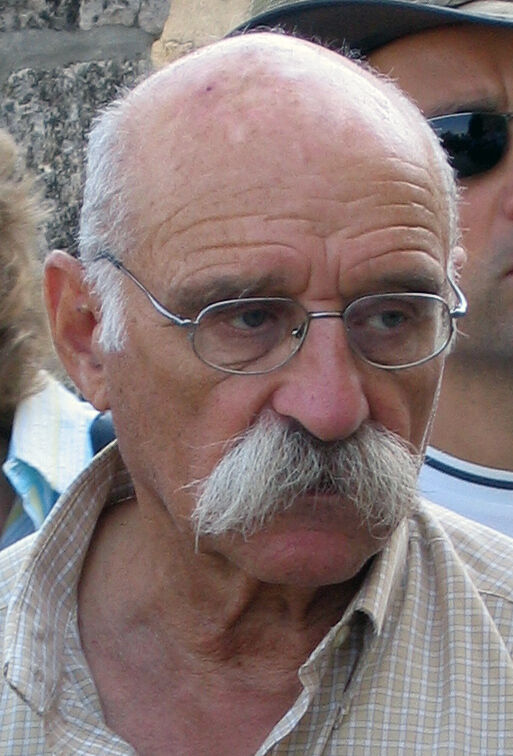
Russell Standish contacted three of the men (the fourth, Joseph Gat, had since died). Despite Wyatt’s claim that such individuals would “deny any knowledge of him,” this was far from the case. Dan Bahat mentioned having between “five and ten” meetings with Wyatt, including going to the Garden Tomb with him on occasion, and called him a “very nice and very gentle man” (ibid, page 95).
Gray wrote in rather colorful detail about an incident involving Bahat, in Ark of the Covenant:
“What’s wrong with you guys? Are you a bunch of school girls? … You’re all scared, aren’t you? Dan… will you…”
Dan Barhart [sic] was a Doctor of Archaeology. Bright, keen and well-read. He also lectured at the Hebrew University. And he had written a book or two.
This was the year 1989. … Dan headed toward the dig. He had on some old gear. An outfit that could get torn or dirty and it wouldn’t matter. He pushed aside the barrier and peered in. “A piece of cake,” he decided. “Scared? Scared of what? Today I shall see the Holy Ark.” Dan pulled out his flashlight and headed in. He had not got three steps toward the tunnel system. Suddenly his legs and back didn’t work. He fell to the ground, groaning.
Dan lay on a bed for two weeks … in agony. Two weeks to think. Two weeks to relive each second. Two weeks to wonder …. A well educated man, Dan Barhart [sic] knew well the story of the Ark. … Some time later, while visiting the United States, Dan would meet Ron Wyatt again. And they would recall the episode. “You know, Mr. Wyatt,” he would say, “I’ve never had trouble with my back before. And I’ve never had trouble with my back since.” (pages 465-466)
In telephone conversation with Russell Standish, this allegation was brought up. Bahat denied ever being hospitalized for any reason for a two-week period, let alone having been paralyzed. “He expressed surprise that Ron Wyatt would make such a claim when it was untrue,” Russell noted.
Bahat recalled being shown nothing at the site, further noting that the Garden Tomb Association had control over activities at the site, not the iaa—and also noting that it was never his duty to sign excavation licenses. He had simply “advised the Warden to let Ron Wyatt clean up the rubbish on the site” (in agreement with Zias’s statement). As for the blood samples? “We are unconcerned if Ron Wyatt publishes his evidence concerning Christ’s blood or the Ark of the Covenant. He is perfectly free to do so” (Holy Relics or Revelation, page 95).
As for General Drori: Drori told Russell emphatically that “his office had not granted an excavating license to Ron Wyatt”—and again, he had “never received a single directive from the government prohibiting the release of any information Ron Wyatt had concerning his discoveries.” And like Bahat and Zias, General Drori nonchalantly stated of the purported blood-test document: “Let him go ahead and openly show the report.”
Could there be a more resounding blessing from Israeli officials for the release of the report?

As for Prof. Amos Kloner, he did not recall Wyatt, though he mentioned that they may have met. Still, he affirmed that his position never allowed him to sign excavation licenses.
The Standish brothers summarized:
Thus, of the archaeologists still living, archaeologists whom Ron Wyatt asserted signed his excavation license, none confirmed his claim. Two of the three denied they had ever signed the licenses or permits of any archaeologists, for their duties did not include such a function. Only General Amir Drorie has held that right, and still does, but he was not appointed to the Israel Antiquities Authority until one year after Mary Nell claims Ron received his license. (ibid)
The Standish brothers summed up the lack of evidence, the alibis, and the applied motives of various organizations and individuals:
Effortlessly we can all construct alibis at will, but how many more reputations must be questioned—of respected Christians and others …. How many researchers must we demean, in order to uphold the claims of a man who has provided not one shred of evidence concerning his numerous Ark of the Covenant claims? Surely it is time to place our questions in the correct direction and draw some appropriate conclusions. (page 100)
At Least ‘It Sure Preaches Good’—Right?
Dr. Kent Hovind is a Young Earth creationist and a Christian evangelist popularly nicknamed “Dr. Dino” for his views on a 6,000-year-old dinosaur age. In a speech several years ago (video here), Hovind discussed a meeting he had with Wyatt before the latter’s death, in which he was told of the ark discovery. Hovind admitted to scoffing at first. Nonetheless, he recounted the story Ron told him, with the statement that “it sure preaches good.”
Does it really?
The New Testament describes Jesus as the ultimate fulfillment of the Passover sacrifice, crucified the same day. Yet in all the tabernacle, temple and ark-related rituals in the Hebrew Bible—which the New Testament details are a foreshadowing of the sacrifice of Jesus for sin—the ark of the covenant plays no role whatsoever on Passover. No blood is dripped onto the ark. Why not, if this was such a key feature to require the miraculous coordination of tunnelling and events across thousands of years, just so that the physical ark of the covenant might be preserved in a position to rest exactly underneath the post-hole of the cross? Why was such a thing never mentioned in the New Testament writings of the apostles? The ark of the covenant and even its ritual symbolism are detailed in several passages (particularly in the book of Hebrews). How could such an important connection have been overlooked?
The New Testament reveals that such Old Testament ritual practices were “symbols,” “foreshadowing” later events. The Passover lamb was a symbol for Jesus. The ark of the covenant was a symbol of God’s throne in heaven. So why, in the actual “fulfillment” of such symbolic foreshadowing, was it so necessary to tie the blood of Jesus back to a symbolic ritual object—the ark of the covenant?
Another thing: The Bible repeatedly states that “life is in the blood.” According to Wyatt, Jesus’ blood was discovered to still be living. Wouldn’t this mean, in a certain sense, that Jesus did not fully die? Surely, even on a symbolic level, dead blood would be more significant from a Christian perspective. Did Jesus not die entirely? Did part of him stay “alive”?
The list goes on. In sum, when it comes to Wyatt’s ark, could it be possible that—as with the ancient Israelites during their fateful battle with the Philistines in 1 Samuel 4—too much symbolism and emphasis could be being placed on the physical ark itself?
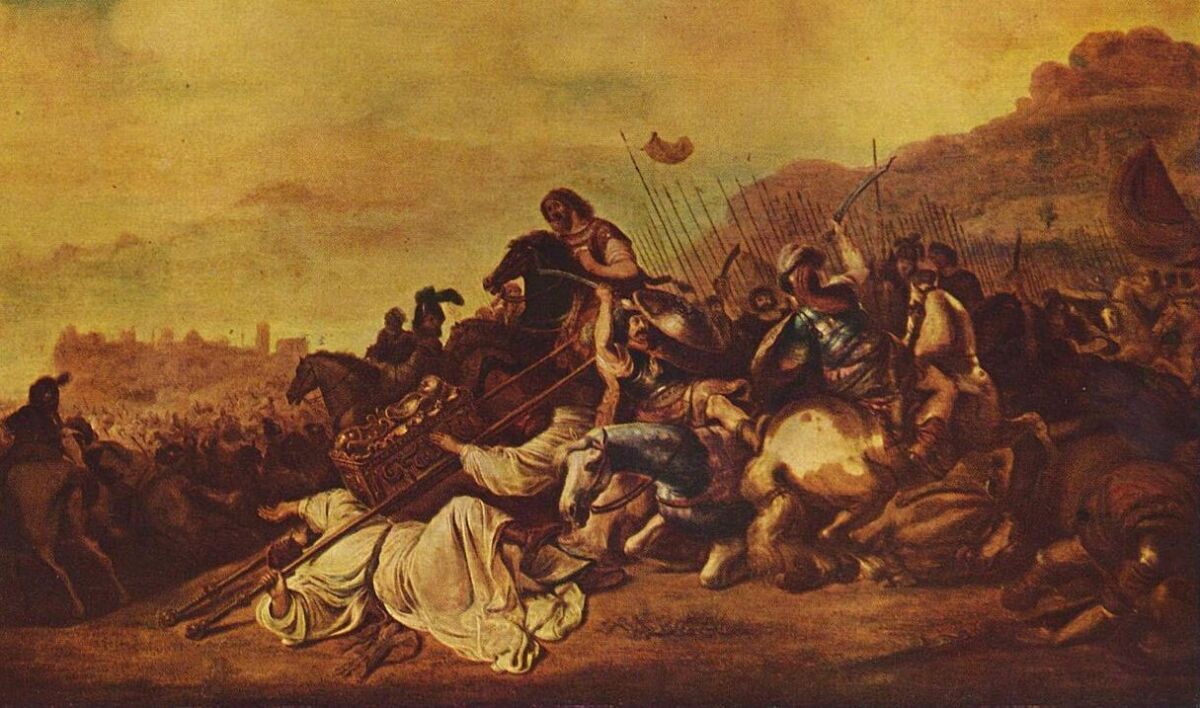
Highlighting the Lack of Evidence
So what to make of all of this? We have a lot of claims, none of which can be verified. Where does this leave us?
In the words of Wyatt’s wife, during the following interview:
Ron could never produce any evidence of the Ark of the Covenant for anyone. And yes, he did try, he did try. But what he would say to people [is] … ‘God has provided us enough evidence to show you this is Noah’s Ark; that this is the Red Sea crossing; … that this is Mount Sinai; that this is Sodom and Gomorrah; … but yet, I can’t show you this, and I’m asking you only to hear what I have to say, and then watch, and wait.’
Recognition of a lack of evidence appears to now be a strategy in presenting Wyatt’s ark of the covenant “discovery.” The main article on the Wyatt Archaeological Research (war) page about the “discovery” starts with the rather disappointing words:
AT THIS TIME, WYATT ARCHAEOLOGICAL RESEARCH CAN PROVIDE NO CONCLUSIVE EVIDENCE REGARDING THE DISCOVERY OF THE ARK OF THE COVENANT.
It reads somewhat similar to the introduction page to Jonathan Gray’s Ark of the Covenant. Yet a niggling question remains: On the back page of his book, he writes that “privileged viewing of evidence and artifacts leave him totally convinced.”
Why was such a “skeptic” as Gray (“Ever skeptical, I preferred to believe only that which I could see with my own eyes”) allowed “privileged viewing of evidence”—evidence that according to the above sources, could never be produced for anyone? Could such evidence be produced for some (e.g. Gray)? And why was this “skeptic,” who originally believed that Wyatt “had to be a liar, an egotist, or at the very least a deluded crank” (Ark of the Covenant, page 60) allowed such privileged evidence, while others are rebuffed as “unbelievers”—and even believers are denied evidence?
It is all the more unfortunate that many such individuals, pouring thousands of dollars (and similar hours of research) into this theory have been left empty-handed and disappointed.
‘Prove’—How, Exactly?
Archaeology is an evidence-based science. And biblical archaeology is the same. The Bible itself speaks to this emphasis on evidence. “Prove me now herewith” (Malachi 3:10; kjv); “Come now, and let us reason together” (Isaiah 1:18); “Prove all things” (1 Thessalonians 5:21).
It’s one thing to put forward a discovered artifact as evidence. But it’s another thing entirely to claim the discovery of an artifact, especially one as dramatic as the ark of the covenant, with no evidence. No artifact that can be analyzed; no film that can be viewed; no lab documents; not even a photograph that can be scientifically examined—and a constant stonewalling for those trying to probe deeper. As Hovind stated: “I can’t verify ANY of this.”
Archaeology aside—theologically speaking, does this sound like God?
The discovery of the ark of the covenant would surely be the greatest discovery in the history of biblical archaeology, the knock-on effects unfathomable. But such unverified claims of discovery (and the constant stonewalling of attempts to corroborate even the least of the claims) only provide evidence of, as one individual aptly put it, “erroneous invention.”
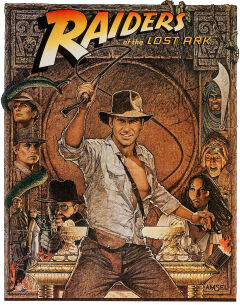
And this only serves to hurt, not help, the field of biblical archaeology. A field hounded by detractors aplenty. Detractors who would already not only see dubious coincidence in Wyatt’s ark of the covenant “discovery” being made just after Crotser’s own blurry-image Mount Nebo “ark” months earlier, but also coincidence in Wyatt’s discovery coming in the months following the release of one of the greatest blockbusters in history: Steven Spielberg’s Raiders of the Lost Ark. (Gray actually writes that “Adolf Hitler of Germany, and his Nazis, believed the Ark to be a mystical artifact, which would give them supernatural powers over mankind”—Ark of the Covenant, page 12. This, of course, is the famous plot of the movie. But despite the movie, “there is no evidence of Hitler ever having had an interest in the Ark”—Jewish Virtual Library, “Ancient Jewish History: The Ark of the Covenant.”)
There’s also the uncanny parallel in Wyatt’s fourth trip, in which he was met by guardians of the arranged holy relics, who told him that they had been keeping watch over them for millennia: Ironically, this is the same theme as Indiana Jones and the Last Crusade (a film which likewise came out at the same time, 1989).
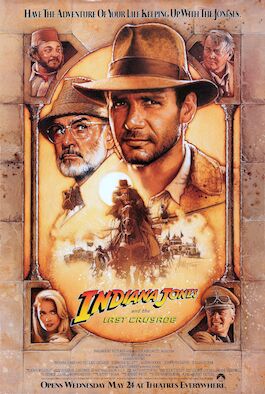
Gray does mention Spielberg’s movie elsewhere in his book: “Since the Hollywood fantasy Raiders of the Lost Ark was first released in 1981, with Harrison Ford in the starring role as Indiana Jones, there had been a proliferation of attempts to find the secret hiding place of this famous treasure” (Ark of the Covenant, page 18). You don’t say. Indeed, a mere four months after the film’s release, Tom Crotser “found” the ark in Jordan. And then three months after that, Wyatt “found” the ark in Jerusalem.
Those of us in the archaeology world all surely carry at least an Indiana Jones spark within us. But biblical archaeology is an always-hungry, never-satisfied creature that seeks and demands evidence-based PROOF. And when it comes to Wyatt’s 1982 “discovery” of the ark of the covenant, there is none here.
Where Does That Leave Us?
With Wyatt’s “discovery,” all we essentially have to go on is very select, often conflicting “testimony”—no provable evidence whatsoever. As such, given the lack of evidence, a common refrain among proponents is, Why would he lie? A key underlying “proof” for these discoveries is trust. Yet the Bible says, “cursed is the man that trusteth in man” (Jeremiah 17:5).
There have been numerous separately claimed “discoveries” of the ark of the covenant in recent decades (several of which Gray himself enumerates and dismisses). Why, the same question could be asked, would any of these other individuals “lie”? Where does the surety come from that Wyatt’s claims are truthful, and that all the others should be cast aside as rank deceit? (Curiously, since the posting of this article, I received an email from a Wyatt supporter proposing the very opposite—that he believed “Ron himself had to lie about some of the facts to avoid being killed.” Even more curiously, the email then concluded by informing me that I, as a “paid liar,” would not be given “a pass with the Lord on judgment day.”)
It is certainly conceivable that Wyatt’s ark-discovery claims were a carefully crafted hoax. But that may also not necessarily be the case. After all, the same question could be asked of any other religious figure out there, particularly who has claimed to have such overtly spiritual experiences: Why would they lie? Ellen White? Joseph Smith? Why would Sabbatai Zevi lie? Or as Alexandra Feodorovna Romanov surely must have wondered, up until the collapse of the Russian Empire and murder of her family, why would Grigori Rasputin lie? Ad infinitum. There are a lot of claims out there, shaped in all manner of ways to make them appear logical when following a certain train of thought.

But the mind is a mysterious thing, as is the spirit world. There are a lot of claims out there, many of them made with all the genuineness, honest intentions and assured convictions in the world—yet still false. The Bible itself speaks of such, who even claim to have witnessed and produced miracles. The New Testament itself warns against “false teachers”—even those who have “performed many miracles” (Matthew 7:22)—and admonishes to “believe not every spirit, but prove the spirits, whether they are of God; because many false prophets are gone out into the world” (1 John 4:1).
Proving requires evidence. What is “of God”—and what is not? “God is not the author of confusion …” (1 Corinthians 14:33).
And “confusion,” it might be said, is an apt description of Wyatt’s ark of the covenant “discovery.”
